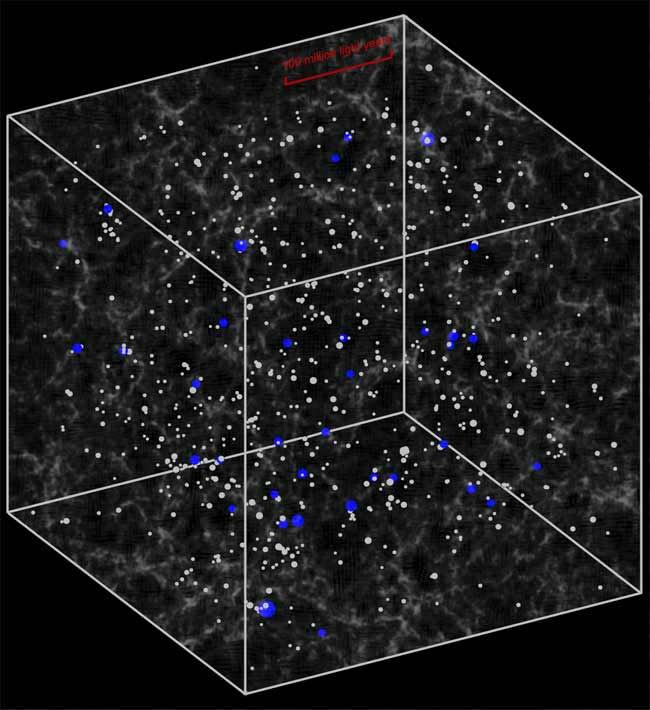
A new cosmic map confirms a close relationship between galaxies with supermassive black holes at their centers and the distribution of the invisible dark matter in the early universe.
- Video: Black Holes: Warping Time & Space
Quasars are incredibly bright objects located at the center of galaxies and thought to be powered by gas falling into enormous black holes up to a billion times the mass of the sun. Although smaller than our solar system, a single quasar can outshine an entire galaxy of a hundred billion stars.
Compared to normal galaxies, quasars are extremely rare, about 200 million light years or more apart from one another on average. The new map was created using the Sloan Digital Sky Survey (SDSS-II) and includes more than 4,000 quasars, some as far as 11 billion light years away. The universe is estimated to be only about 14 billion years old.
The new map [image] reveals a close relationship between quasars and dark matter, as predicted from theory.
"By measuring the clustering of quasars, we can learn about the dark matter halos in which they sit, and we find that they live in these very rare and very massive dark matter halos in the early universe," said study team member Michael Strauss of Princeton University.
The new map will be detailed in an upcoming issue of The Astronomical Journal.
Dark matter is a mysterious hypothetical substance that does not interact with light photons and is thus invisible to current detection instruments. Scientists estimate that only about one-sixth of the matter in the universe is visible, while the rest is dark matter.
Current theories predict that matter-both the dark and visible variety-was smoothly distributed in the early universe, and that over time, it became more concentrated.
Breaking space news, the latest updates on rocket launches, skywatching events and more!
"Dark matter halos are a dime a dozen in the present day universe, but in the young universe, they were really quite rare," Strauss said.
It was in these rare spots of concentrated dark matter that the first massive galaxies and quasars formed.
"The quasars themselves are sort of a signpost to those very massive [dark matter] halos, and our work makes that a little more clear," Strauss told SPACE.com.
Avi Loeb, an astronomer at Harvard University who was not involved in the study, says the new findings could help answer a major question in cosmology: How did the first quasars form at all?
"How did black holes grow to a billion times the mass of the sun when the universe was only a tenth of its current age?" Loeb said. "The SDSS measurements will help us answer this question."
- Twinkle, Twinkle, Little Quasar
- Understanding Dark Matter and Light Energy
- Astronomers Create 3D Map of Dark Matter
- Dark Matter Exposed: Animation Offers Clues to Cosmic Mystery
Ker Than is a science writer and children's book author who joined Space.com as a Staff Writer from 2005 to 2007. Ker covered astronomy and human spaceflight while at Space.com, including space shuttle launches, and has authored three science books for kids about earthquakes, stars and black holes. Ker's work has also appeared in National Geographic, Nature News, New Scientist and Sky & Telescope, among others. He earned a bachelor's degree in biology from UC Irvine and a master's degree in science journalism from New York University. Ker is currently the Director of Science Communications at Stanford University.
